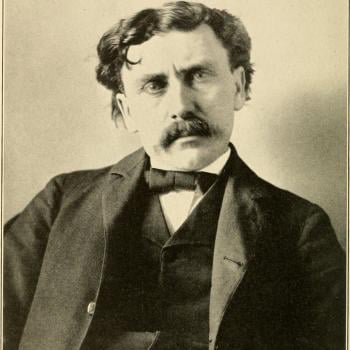I have been puzzling over the origins of Gnosticism, and we can certainly find some plausible answers to that issue. Jewish, Greek and Christian, (and possibly Persian), the building blocks were all clearly there. Perhaps, though, I have been asking the wrong question all along. Instead of asking why some people came up with that particular set of answers, we should rather inquire why others didn’t.
I will focus on the era from roughly 150 BC through 150 AD. In the Greek world, the best-known intellectual current in this era was Platonism, but this coexisted with several other schools of thought, including Stoics, Pythagoreans and Aristotelians. From about 100 BC, Middle Platonism drew on these other ideas, with which it remained in dialogue. At least from the second century, Jewish thinkers confronted these Greek ideas, and tried to frame their own thinking according to the dominant international world-view. As I have remarked, they were trying to adapt to cultural globalization.
In many ways, drawing on Greek thought and language was not difficult. One massive problem, though, involved the strict monotheism that was and is the absolute foundation of Judaism. In trying to Hellenize, Jews encountered massive problems in Greek views of religion, and that certainly did not mean integrating such familiar figures of popular religion as Zeus, Dionysus and Herakles. At this time, any learned Greek would have happily accepted that these figures were symbolic manifestations of the divine, handy totems of vulgar faith.
The basic problem lay in explaining the Creation, and identifying the Creator. Greek thinkers commonly presented views that to us seem like pure monotheism, imagining one transcendent deity over all things, an absolute One. Material things existed only as shadow images of ideal forms within that One. Not for a second, though, could philosophers tolerate the suggestion that this being might have created the material universe. Of its unchangeable and immovable nature, the highest One could have had nothing to do with the lower realms of change and motion. That process was the work of a lower being, which was still exalted, but which was only a Demiurge, a Craftsman. Think of the distinction between a celebrity architect designing a building and the mere building contractor getting his hands dirty.
The One, the Monad, was above all things; the Dyad, the Two, made the world. The Demiurge and the World-Soul, were divine, but not absolute, and that distinction was stark and unavoidable. Of its nature, a transcendent deity could not be a creator.
What was a Jewish intellectual to do? The Bible made it easy to identify the Jewish God as the One who reigned above all, and Jews had no hesitation in claiming that identification. But that same Bible also left no doubt that that same God was directly involved in creation, and interfered in that worldly process, directly and repeatedly.
From a Greek perspective, this was not merely absurd, but actively scandalous. Worse, this same deity was so far from being impassible and unchangeable that he actually felt emotions. This was the behavior of a primitive tribal god. It was rather like treating the Greek fables of Zeus or Hera as serious theology.
In popular history, many Christians imagine the early church trying to take their exalted view of the one God to ignorant polytheists, and trying to rid them of their silly superstitions. For the educated Greek world, though, the conventional construction of the Jewish/Christian deity was so self-evidently primitive as to be embarrassing.
Jews could of course ignore Platonism and the other Greek philosophies, but if they did, they were abandoning any claim to a place in civilized society. Somehow, Jewish thinkers had to find ways of reconciling competing views of the divine. As I will discuss in my next post, scholars like Philo made heroic efforts to do this, postulating aspects of the deity that could serve as creator and as intermediary. The difficulty was in constructing such a figure, the Logos, without it acquiring divine qualities in its own right, and contaminating the monotheist vision.
The simpler solution was to accept the philosophical logic, and to admit freely that the transcendent God was not identical with the creator of the world. This is not true cosmic Dualism, which implies two equal divinities, but rather imagines one true God and a flawed imitator. Such a distinction was fundamental to Gnostic systems, which evolved many myths and stories to suggest how such an inferior deity might have arisen. In some cases, that two-God solution might have owed something to anti-Judaism, a deliberate rejection of the Old Testament deity. As the Jesus movement arose and became a separate faith, it was natural and logical for some believers to identify the two deities with the old and new dispensations, the gods of the Old and New Testament.
Complicating the situation was the very powerful drive in the Jewish world at exactly this time to imagine a very powerful Devil who (by some accounts) was in fact Lord of this World. If we identify that Satan with the Demiurge, then we really have reached full-scale Dualism.
But whatever other explanation we reach, we have to admit that it follows exactly the logic of the contemporary philosophical schools. The real wonder is not that Gnostic/Dualist views emerged, but rather than the mainstream church remained rooted in strict monotheism.
Some Jews, of course, would dispute that last assertion, and argue that Christianity itself succumbed to tritheism.












